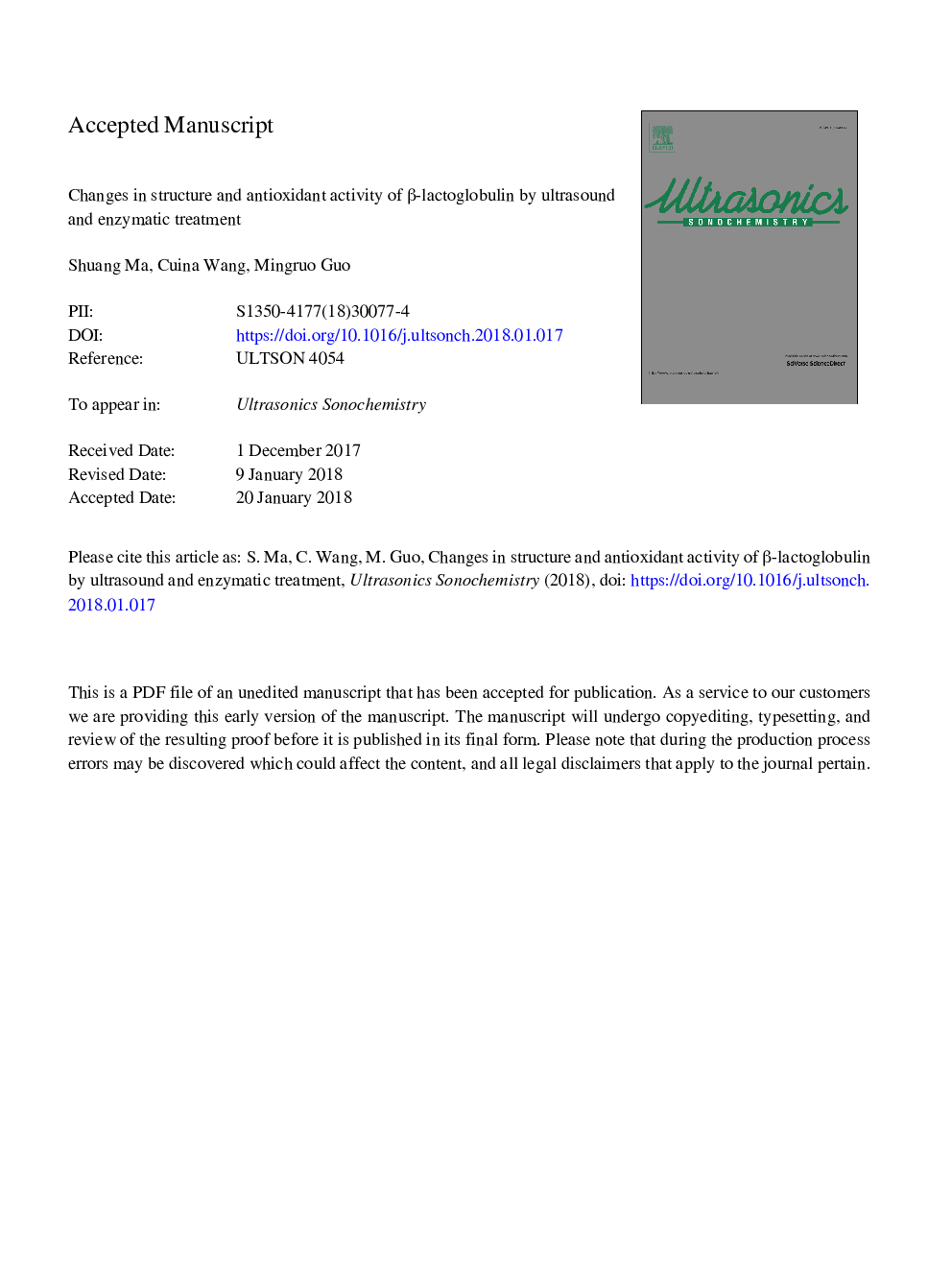| Article ID | Journal | Published Year | Pages | File Type |
|---|---|---|---|---|
| 7703110 | Ultrasonics Sonochemistry | 2018 | 45 Pages |
Abstract
Effects of ultrasound (20-40% amplitudes at 45-55â¯Â°C) and enzymatic (pepsin and trypsin) treatment on structure and antioxidant activity of β-lactoglobulin were studied. Changes in structure of β-lactoglobulin were investigated using spectroscopy techniques and changes in antioxidant activity were measured by chemical and cellular-based assays. Ultrasound treatment had considerable impact on the structure of β-lactoglobulin and increased the susceptibility of β-lactoglobulin to both pepsin and trypsin proteolysis. Intrinsic fluorescence intensity of β-lactoglobulin was increased by ultrasound and then decreased after following enzymatic treatment. Compared with control, the β-lactoglobulin after ultrasound and enzymatic treatments showed significantly higher oxygen scavenging activities in Caco-2 cells models, ABTS (2, 2â²-Azinobis-3-ethylbenzthiazoline-6-sulphonate) radical scavenging activity and oxygen radical absorbance capacity (pâ¯<â¯0.05). Results indicated that ultrasound treatment increased the proteolysis of β-lactoglobulin by both pepsin and trypsin and improved the antioxidant activity of the protein and its proteolytic products.
Related Topics
Physical Sciences and Engineering
Chemistry
Chemistry (General)
Authors
Shuang Ma, Cuina Wang, Mingruo Guo,
